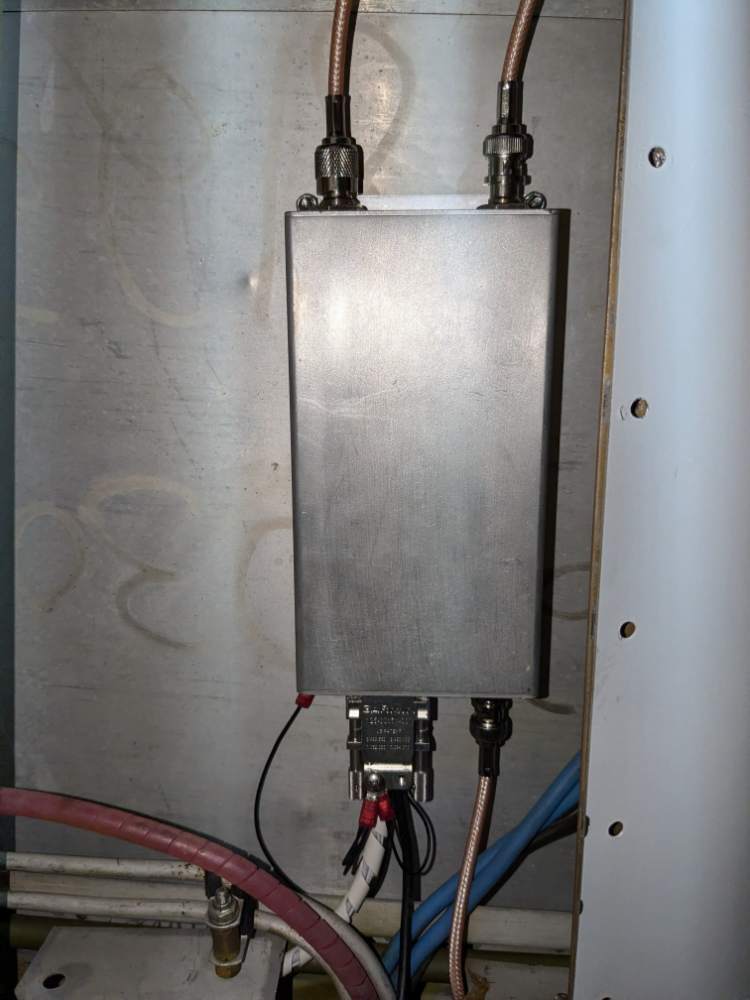-
Posts
51 -
Joined
-
Last visited
Profile Information
-
Base
KPRC
Recent Profile Visitors
913 profile views
Elijah's Achievements
-
I would be interested in that, I'll PM you. I am going to go look through things today and hopefully I can find a wiring issue but if not, I'd love to have that on hand. Yeah I have actually had some luck fixing voltage regulators in the past. Of course not for certified aircraft but they all work similarly. This one seems to control field currently by PWM. I studied it a bit last time this happened but I could never get the problem to show up again. Of course now that I'm on a trip now it shows itself! At least it's very consistently failing now.
-
I just found this thread, this sounds exactly like what I'm seeing. I'm going to take a close look at the canon plug... https://mooneyspace.com/topic/47294-voltage-regulator-alternator-or…/page/2/#findComment-838077
-
I'm happy to hear that, I imagined it was all potted in plastic and nothing repairable. Maybe it can be fixed. I think I'll take it out tomorrow. I remember it's under the dash on the firewall and not real easy to get to.
-
Elijah started following Early M20J over voltage tripping
-
On my flight to Wyoming today, the over voltage protection started tripping. This has happened in the past but so intermittently I could never pin down the problem. The alternator has been checked and seems fine, good brushes etc. So, I am thinking voltage regulator but I thought I'd see if anyone has experience with this or any other thoughts. What's happening now is within a minute of powering on the field breaker (sometimes immediately, sometimes a minute, kinda random) the charge current spikes and the voltage goes up to 14.8, 15 and then the OVP trips, the voltage light comes on, and the bus voltage returns to the battery resting voltage. Cycle the field breaker and it all repeats. The charge current can spike almost to 60a very briefly. It's gotta be the regulator right?
-

ADS-B for 1984 M20J with original equipment
Elijah replied to Beard's topic in Modern Mooney Discussion
I just went through this same calculation on my project last year - my conclusion was the Garmin GDL82. It has a built-in WAAS source and goes inline with your existing mode C transponder. I have an old KT-76 transponder. My thoughts were as follows: There are a bunch of relatively inexpensive ADSB-in solutions out there (stratus, stratux, sentry etc) and I'm happy with that. In the panel ADSB-in adds a lot of cost over these solutions and I am always flying with an ipad or phone anyway. The uAvionix skybeacon is the cheapest and easiest ADSB out solution, but I have had issues in other planes with their LED strobe making noise on the radio. It's out in the elements, plastic, and surely has limited life from that. The connection to the transponder is wireless and this makes the configuration a bit more fiddly to get it to reliably pickup your squawk code. It does support anonymous mode but you can only switch it from the app, while on the ground - also a bit fiddly. The garmin GDL-82 is about the same price as the skybeacon and requires more install work. But, it's very robust and I have no doubt it will last for many years. It's hardwired to the transponder and as such is always synced to the squawk code. You can switch in and out of anonymous mode at any time. I mounted the GPS antenna on the tail behind the baggage area and the GDL box is in the belly under the passenger seat. I bought the GDL-82 used for $1200 and am very happy with it. These are all "UAT" solutions and the only way to avoid your tail number going out on the air all the time. The other path you can take is a new transponder. As others have mentioned, the Garmin GTX-345 or Stratus ESG are popular. I considered both of those as well but given the cost and all the ADSB billing nonsense, the GDL-82 made the most sense to me. BTW after a few cross country trips, I will say that FlightAware's coverage of the UAT frequencies is not that great. Edit: just noticed you're in Canada. UATs are of no use for you there. The GTX-345 is the only transponder I'm aware of that has the required antenna diversity (antenna on top and bottom of the airplane). I think the uAvionix tailbeacon X would work as well. -

New to Mooneys and fresh PPL, what does this switch do ?
Elijah replied to Souhail's topic in Modern Mooney Discussion
That transponder requires an altitude encoder so I'm sure you still have one in the panel somewhere. I also think those transponders can display the altitude the encoder is sending, I'd turn off the encoder switch, power everything up and see if the transponder still displays correct pressure altitude. Then you'll know if that switch is doing anything or not :-) -
That airport it not very far from here, I've flown over it before. It definitely sounds like a good place to avoid. During COVID, the conditions on the hualapai reservation were very similar to how it was in China (severely restricted freedom of movement) if that gives you another data point. I think I have enough tools onboard to have pulled the U joint from one of those trucks and nope'd on out of there. Grand canyon caverns is just down the highway and not on indian land. They are very friendly to airplanes and although the runway is dirt, it's in good condition and plenty large enough for a mooney.
-

Tis the season - Post up Headset sales, please!
Elijah replied to AJ88V's topic in Miscellaneous Aviation Talk
Do you recall what the "on sale" price was? I borrowed one from a friend awhile back and was impressed with these as well. Wouldn't mind picking one up at some point, probably the bluetooth version. -
Thanks guys for the help. It looks more like the A612 lens but according to the IPC from my serial number (-0301) it should be the A428 lens. I will reach out to Gallagher and see what he can find!
-
Elijah changed their profile photo
-
I'm looking for one of the plastic hemisphere covers that go over the strobe bulbs. I think this is the original strobe that was installed. I believe it's this - https://lasar.com/lights/lens-cover-202816 Does anyone know if you can still get these somewhere, or better yet a glass equivalent? The existing plastic ones have seen better days!
-
My friend did that part but I think it was basically getting a DAR to look at the airplane and write a report to the FAA saying yes, this airplane is actually repairable. The FAA then returned the salvaged data tag which was much worse for the wear. That worn out data tag went to mooney and they issued a new one with the same data on it. And after all the repairs were made, that same DAR inspected the airplane and issued a new standard airworthiness certificate.
-
It's almost exactly 5 years since that happened. I'm really sorry it sat there for so long, the sun really took its toll on everything. Whoever salvaged it for the insurance company took the radios and data plate, and that missing data plate caused no end of problems. That's why it was stuck there so long. Well that, plus the logistics of working on it when it was stuck in Winslow. It'd be interesting to see a few of the pics you took back then! Feel free to post here or PM me.
-
Well I am happy to say that after all that work, she's finally flying! Parked on the ramp in Kingman Flying over northern AZ looking north Departing KPHX Pretty much everything is working and there were no issues on the first flights. Of course "pretty much" means not everything The EGT gauge is intermittent, there was a loose connection between the selector switch and the meter, fixed that and it was good for a few flights but now it seems like maybe there is another loose connection in the selector switch. The right tank also has a weep along the bottom of the spar. I will need to open that tank and patch that, maybe a winter project. And, the century IIB autopilot only tracks the heading bug. No matter what you select on the heading box, only tracks the heading bug. But that's all relatively minor - it really does fly and it flies nice! The new windows are amazing to look out of, that's the most visible of all the work I did. I'm seeing 150 - 155 knots true around 8500 ft. That's also what flight aware showed on its fateful flight out to arizona from socal.










